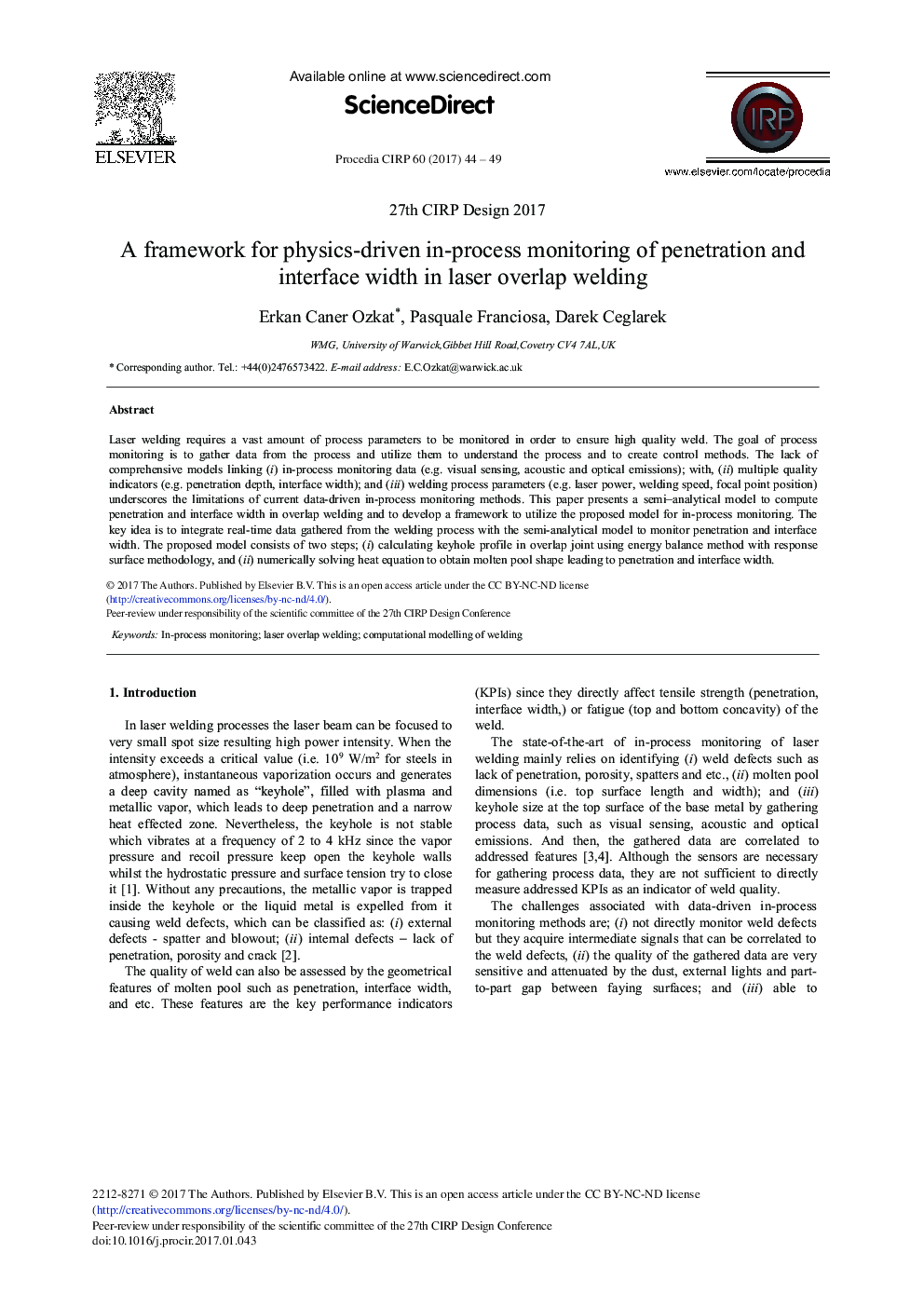| Article ID | Journal | Published Year | Pages | File Type |
|---|---|---|---|---|
| 5470581 | Procedia CIRP | 2017 | 6 Pages |
Abstract
Laser welding requires a vast amount of process parameters to be monitored in order to ensure high quality weld. The goal of process monitoring is to gather data from the process and utilize them to understand the process and to create control methods. The lack of comprehensive models linking (i) in-process monitoring data (e.g. visual sensing, acoustic and optical emissions); with, (ii) multiple quality indicators (e.g. penetration depth, interface width); and (iii) welding process parameters (e.g. laser power, welding speed, focal point position) underscores the limitations of current data-driven in-process monitoring methods. This paper presents a semi-analytical model to compute penetration and interface width in overlap welding and to develop a framework to utilize the proposed model for in-process monitoring. The key idea is to integrate real-time data gathered from the welding process with the semi-analytical model to monitor penetration and interface width. The proposed model consists of two steps; (i) calculating keyhole profile in overlap joint using energy balance method with response surface methodology, and (ii) numerically solving the heat equation to obtain molten pool shape leading to penetration and interface width.
Keywords
Related Topics
Physical Sciences and Engineering
Engineering
Industrial and Manufacturing Engineering
Authors
Erkan Caner Ozkat, Pasquale Franciosa, Darek Ceglarek,
